Okay, let’s take a deep breath about Rosetta and remember just how far we’ve come since the mission arrived at its target comet in August. Lately we’ve been focused on reporting on the Philae landing, but remember how we barely knew how the comet looked until this summer? How much of a surprise the rubber duckie shape was to us?
This Hubble Space Telescope model from 2003 shows us why. From afar, Comet 67P/Churyumov-Gerasimenko is a tiny object to image, even for the NASA probe’s powerful lens. Back then, the telescope was tasked with examining the comet to look at its size and shape to better design the Philae lander spacecraft. And the model reveals no duckie; it looks more like a sombrero from some angles.
The main concern of scientists back then was redirecting Rosetta to a new target when its original comet (46P/Wirtanen) fell out of reach due to a launch delay. 67P was bigger and had a higher gravity, requiring scientists to make adjustments to Philae before landing, according to the release. So Hubble sprung into action to look at 67P. Below are the release images from that time.
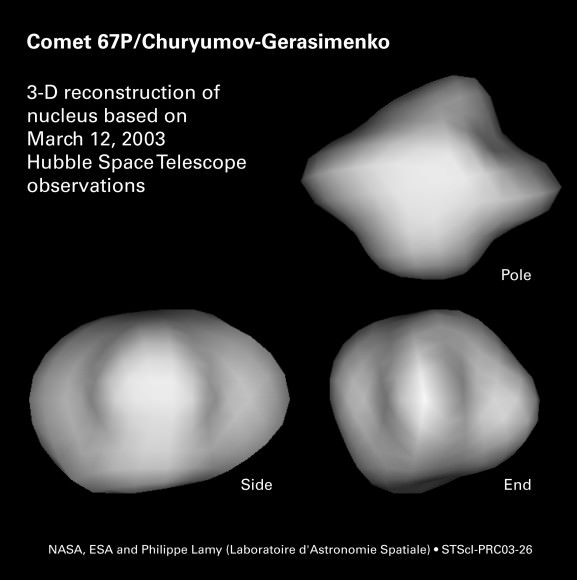
And here’s a fun quote from 2003 that finally came last Wednesday, when Philae touched down for its (sadly brief, so far) mission on the comet: “Although 67P/C-G is roughly three times larger than the original Rosetta target, its elongated shape should make landing on its nucleus feasible, now that measures are in place to adapt the lander package to the new configuration before next year’s launch,” stated Philippe Lamy of the Space Astronomy Laboratory (Laboratoire d’Astronomie Spatiale) in France.
We’ve sure come a long way since then. Below are some of the pictures Rosetta caught of 67P as it made its approach to its target this year, after a decade flying through space. While Philae is in what could be permanent hibernation, Rosetta is orbiting, working well and expected to keep up observations when the comet draws closer to the sun in 2015.
(h/t Reddit)
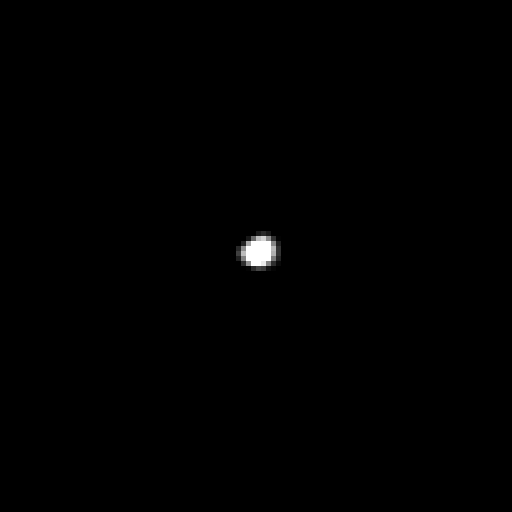
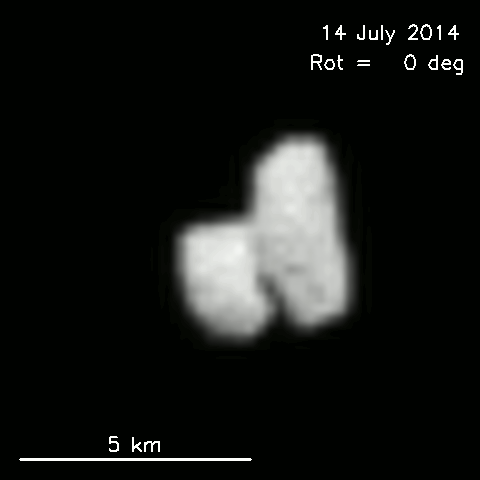
Credits: ESA/Rosetta/MPS for OSIRIS Team MPS/UPD/LAM/IAA/SSO/INTA/UPM/DASP/IDA
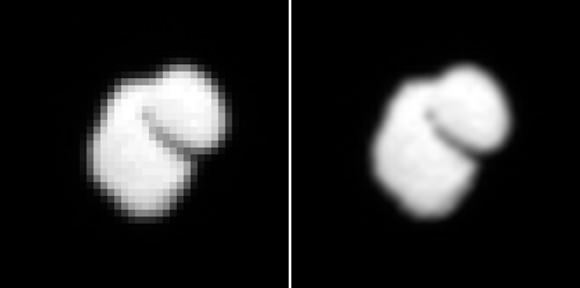
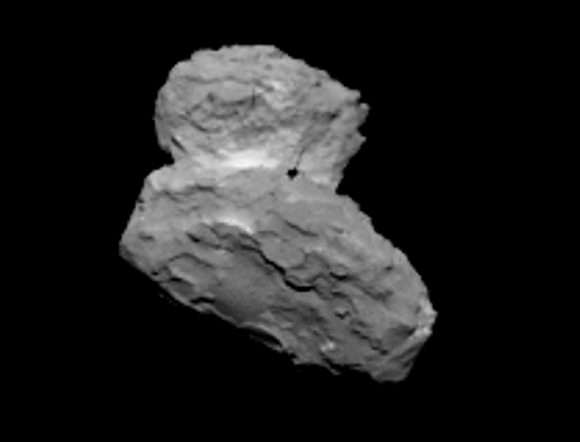
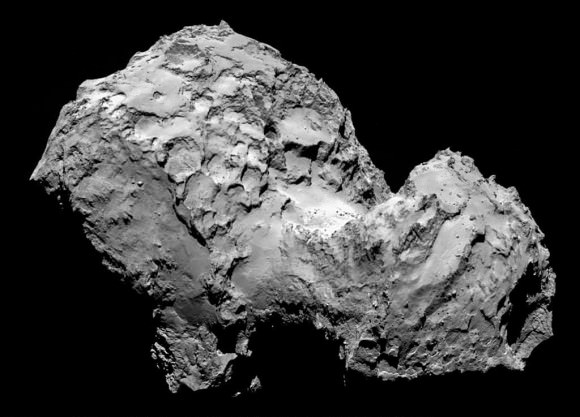

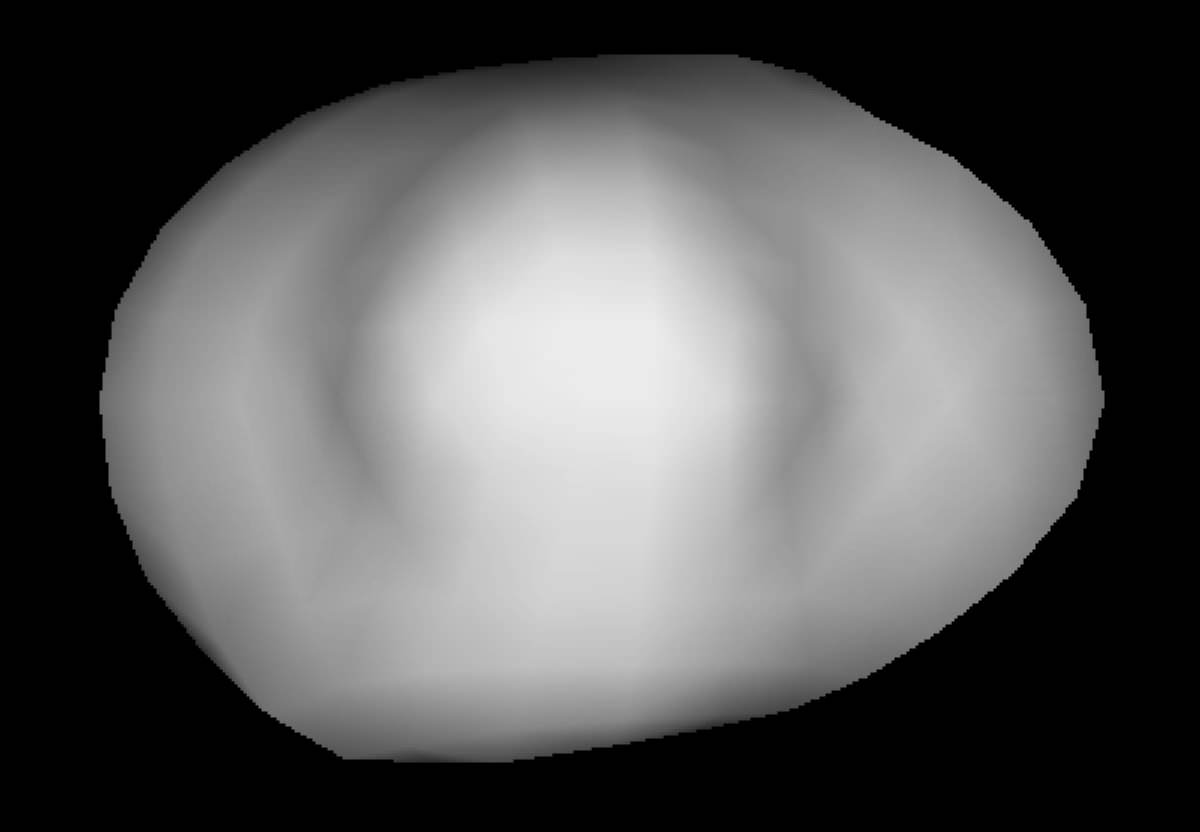
Somewhat misleading article: it seems to imply that Hubble directly ‘saw’ the presumed nucleus shape, which is actually far beyond its resolving power. The model was reconstructed (as stated in the illustration) from light curve analysis.
The relevant questions are: why did it fail for 67P? Are shape models for other comets and asteroids likely to be as wrong, or does 67P have a specific issue? Is the technique accurate provided some assumptions which 67P wouldn’t meet, such as a low convexity?
Good point, Manu. I think we should send a few more missions out to check.
“From afar, Comet 67P/Churyumov-Gerasimenko is a tiny object to image, even for the NASA probe’s powerful lens.”
To a large extent, metaphors are OK, but somehow making it sound as if the Hubble is a refractor is a big no-no.
Hooray for the self-correcting nature of science. Who knows how many current pet hypotheses may get trashed after we collect more in-your-face data.